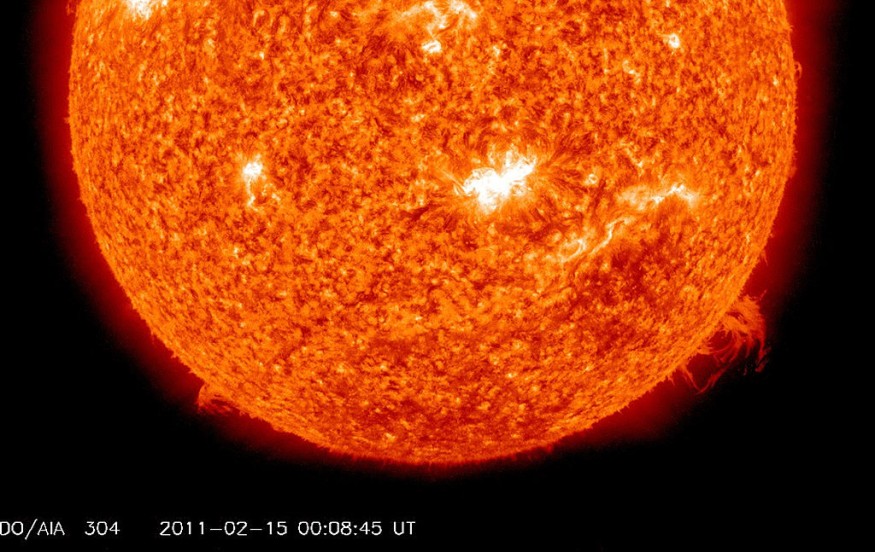Solar satellites detected the strongest solar flares in over three years. Consequently, radio signals were shut out when the flare struck in the late hours of November 23.
The solar outburst was measured as an M4.4 flare. Tiny C-class flares, medium-sized M flares, and large X-class flares are known as solar flares. There are also subcategories from 1 to 9 in any class, so an M9 flare is stronger than an M4.
Flares send out a huge burst of electromagnetic radiation, which, in the case of powerful X-class flares, may trigger radio blackouts, often throughout the entire world. M-class flares like Sunday's typically produce only minimal Earth disturbances.
Solar flares may be dangerous to radio waves, according to Forbes, since ionisation happens as they enter the atmosphere, which saps energy from radio waves. The blast flung a plum of plasma more than 350,000 km around the Sun. NASA's Solar Dynamics Observatory documented the splashdown.

Did It Directly Affect Earth?
The spectacular solar flare circulated on social media, with the Sun apparently bubbling before bursting into existence. A flare blast of ultraviolet radiation reached Earth and ionized the surface of our atmosphere momentarily.
Astronomy site Space Weather said Sunspot AR2785 erupted during the late hours of November 23 (2335 UT), producing a C4-class solar flare. his prompted a shutdown in shortwave radio across the South Pacific, including eastern Australia and New Zealand as a whole.
Astronomer Dr. Tony Phillips told Spaceweather.com that HAM radio operators and mariners might just have encountered unusual transmission results at frequencies below 20 MHz and with specific signals below 10 MHz totally extinguished.
Another look at the coronal mass ejection launched by the M4.4 flare earlier today. These images come from SOHO which is a space craft that looks at CMEs from earth's point of view. A fast and impressive CME can be seen but as mentioned earlier, it is not directed towards Earth. pic.twitter.com/mVvOGebuon — SpaceWeatherLive (@_SpaceWeather_) November 29, 2020
More Sun-Flares Sooner Than We Thought
The flare of Sunday is only part of the beginning of a new solar cycle (to be accurate, Solar Cycle 25), which formally started in December 2019, but that milestone was not confirmed until mid-September. This implies that before about mid-2025, we should predict a duration of rising activity and explosive sunspots.
Major solar storms have culminated in severe power outages on Earth before in Quebec, 1989. The so-called 'Carrington Case' of 1859, which destroyed electrical devices on the field (including most telegraph systems), is considered the most effective direct hit in modern history.
Many have warned that our digital community and satellite-based communications dependence is especially susceptible to a strong solar storm that might arise at just about any moment.
And as the solar cycle progresses to a new limit in the coming years, the chance of such an occurrence grows.
There might be the next major flare right around the corner.
"The hidden sunspot that produced this major event will rotate onto the Earthside of the sun during the next day or two," according to Phillips. "Then its ability to spark geomagnetic storms will be greatly increased."
Check out more news and information on Space on Science Times.
© 2025 ScienceTimes.com All rights reserved. Do not reproduce without permission. The window to the world of Science Times.












